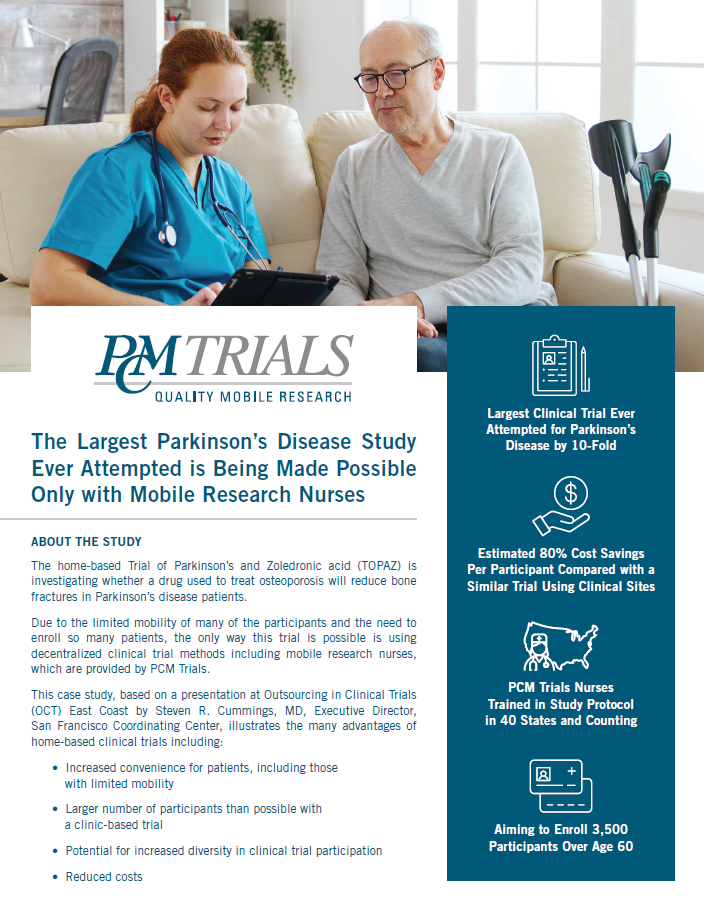Hereditary orotic aciduria, an extremely rare inborn error of pyrimidine metabolism, has around 20 documented medical cases in its history. Affected newborns quickly develop a severe hematological disorder and anemia, which leads to stunted physical and intellectual development.
In 2014, a four-patient Phase III trial showed patients treated with WellStat Therapeutics’ uridine triacetate achieved stability in a set of prespecified hematological parameters. In 2015, the FDA approved uridine triacetate under the brand name Xuriden based on the limited Phase III data. Today, hereditary orotic aciduria is the rarest disease with a marketed therapy.
While Xuriden stands out as a success story in rare disease drug development, it is largely overshadowed by the countless ultra-rare diseases without any clear path to treatment. Nearly 85% of the more than 6,000 documented rare diseases have an incidence of less than one in one million, and around 90% of known rare diseases have no approved treatment, according to Orphanet’s global database. Experts say it’s impossible to pinpoint how many more people have even rarer conditions, and there are many examples of gene mutations known to exist in only one person.
With an uncertain regulatory environment and steep development costs, it is exceedingly difficult to bring an ultra-rare disease drug to market. Drug manufacturers say they struggle to pinpoint endpoints for clinical trials, and bioethicists have concerns with existing standards for testing experimental treatments.
Nevertheless, experts say the field is moving away from looking at treatments for individual ultra-rare diseases and towards exploring solutions for groups of conditions with shared characteristics. This could open the door to more innovative regulatory pathways and scalable treatment platforms, giving N-of-1 patients a glimmer of hope.
How well do you really know your competitors?
Access the most comprehensive Company Profiles on the market, powered by GlobalData. Save hours of research. Gain competitive edge.

Thank you!
Your download email will arrive shortly
Not ready to buy yet? Download a free sample
We are confident about the unique quality of our Company Profiles. However, we want you to make the most beneficial decision for your business, so we offer a free sample that you can download by submitting the below form
By GlobalDataWhat defines ultra-rare?
The FDA defines a rare disease as any condition affecting less than 200,000 people in the US. However, the FDA makes no formal distinction between a rare disease affecting 199,000 people and one affecting two people, explains Dr. Tim Cote, an orphan drug consultant and former director of the FDA Office of Orphan Products Development. Europe’s EMA, which defines a rare disease as any condition affecting fewer than one in 2,000 people, similarly lacks any formal distinction for even rarer conditions.
Informally, the FDA is willing to grant flexibility for ultra-rare conditions with high unmet need, Cote notes. The approval of Xuriden illustrates that the agency can show “extraordinary flexibility” when the evidence is clear, he adds.
“There’s a lot of hesitation on the part of institutions, funders, and companies to start getting involved in ultra-rare disease drug development because the regulation seems so fuzzy to them.”
Alison Bateman-House, PhD, bioethicist at NYU Langone Health
But the lack of any formal regulatory distinctions between “rare” and “ultra-rare” diseases creates a problematic gray area for both patients and potential drug manufacturers, explains Alison Bateman-House, PhD, a bioethicist focused on access to investigational treatments. Some patients can receive experimental treatments almost immediately through compassionate use programs that require limited prior testing, she says. But others are told they must wait years for a full slate of regulated clinical trials to access a drug, and there is no apparent intermediate standard.
“There’s a lot of hesitation on the part of institutions, funders, and companies to start getting involved in ultra-rare disease drug development because the regulation seems so fuzzy to them,” Bateman-House says.
A new regulatory path?
In recent years, there has been a shift in emphasis from addressing rare diseases as individual entities to looking for commonalities among groups of rare diseases, says Aliza Fink, director of Research Programs at the National Organization for Rare Diseases (NORD). However, current regulations only provide a pathway to approve drugs for specific diseases, not for broader disease classes.
But Ulrich Granzer, PhD, founder of Germany-based Granzer Regulatory Consulting & Services, says he is working with multiple regulatory bodies to design a system to approve drugs for classes of ultra-rare diseases. Though confidentiality agreements preclude him from naming specifics of the conversations, Granzer says this type of model could allow dozens of diseases to fall under a single drug approval.
For example, a drug could receive a label for diseases presenting ataxia, or involuntary muscle convulsions, where a mutation in a gene sector has occurred, Granzer notes. When a patient emerges with a new ultra-rare disease that fits within the broader disease description, this new disease could efficiently be added to the existing label, he explains.
Choosing clinical endpoints
With limited to no knowledge about the typical natural progression of patients presenting with ultra-rare diseases, it is challenging to develop outcome measures to determine a drug’s success. To select trial endpoints for ultra-rare diseases, clinicians are drawing analogies to more prevalent diseases with similar manifestations, Granzer says. For the example of rare diseases characterized by ataxia, trials could draw on established endpoints for gait-impairment conditions such as the 6-Minute Walk Test (6MWT), he says.
“To select trial endpoints for ultra-rare diseases, clinicians are drawing analogies to more prevalent diseases with similar manifestations.”
Ulrich Granzer, PhD, founder of Germany-based Granzer Regulatory Consulting & Services
Since placebo-controlled trials are not feasible for ultra-rare disease trials, these studies should also target objective biomarker measures less likely to be affected by human bias, adds Dr. Joseph Gleeson, a professor of neurosciences at UC San Diego. For example, if an ultra-rare disease is characterized by kidney disfunction, then established biomarkers of renal function can provide a more objective view of the drug’s effect, he explains.
In addition, ultra-rare diseases can present highly heterogeneously, so the FDA could give each patient in a small clinical trial their own primary endpoint, Cote notes. In the four-patient Phase III trial of Xuriden, there were three different primary endpoints depending on each patient’s particular hematological manifestation. One patient used neutrophil count, one used total white cell count, and two used red blood cell mean corpuscular volume.
Progress in scalable technology platforms
Already, the FDA has granted some flexibility in allowing investigator-initiated trials of antisense oligonucleotides (ASOs) to treat N-of-1 diseases. ASOs are tiny strands of modified DNA that can precisely target defective genes for rare diseases characterized by a single mutation.
The n-Lorem Foundation, a nonprofit founded by former Ionis Pharmaceuticals CEO Stanley Crooke, aims to provide free, individualized ASOs for ultra-rare diseases with 1 to 30 patients. The goal is to go from identifying a patient’s disease to dosing the patient in less than one year, says Gleeson, who also serves as n-Lorem’s CMO.
By treating ASOs for new ultra-rare diseases as repurposed drugs, the FDA can reduce the amount of toxicology and preclinical studies needed to initiate a human trial, Gleeson explains. Even though each ASO is individually engineered for specific patients, the ASO technology platform is already established as a whole, he says. The FDA is granting this flexibility for ultra-rare diseases that are life-threatening or severely debilitating, he notes.
“The goal is to go from identifying a patient’s disease to dosing the patient in less than one year.”
Dr. Joseph Gleeson, CMO of the n-Lorem Foundation
Beyond ASOs, there’s also opportunities for other scalable technologies to follow this model, such as CAR-T therapies, Bateman-House says. But financing drug development and ensuring safe and consistent regulatory standards currently present major obstacles, she cautions.
Financing drug development
The n-Lorem Foundation relies entirely on philanthropy, the majority of which comes from its founder, Gleeson explains. Right now, this model cannot be commercialized without a significant regulatory change, adds Bateman-House, who has consulted with n-Lorem on patient access.
If regulators gave marketing approval to ASOs, or similar platforms, as a single product, there could be potential for commercialization, Bateman-House says. As an example, the flu vaccine is altered annually based on specific influenza strains, but the vaccine technology itself doesn’t require a new approval each year, she notes.
In the case of Xuriden, WellStat Therapeutics received a Rare Pediatric Disease Priority Review Voucher, which can grant a drug priority review or be sold on the open market. These vouchers are highly sought among drug developers and currently sell for over $100 million apiece, Cote says.
But while vouchers and non-profits have made strides in promoting ultra-rare disease drug development, experts agree on the need for better regulations and greater focus on commonalities among ultra-rare conditions. “As the number of known rare diseases continues to rise, looking for the shared characteristics seems to be a much more effective way to address the plight of [those] affected by rare diseases that simply have no treatment,” Fink says.








